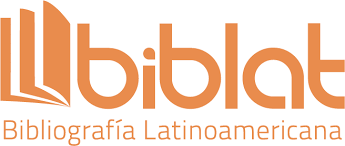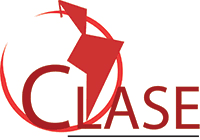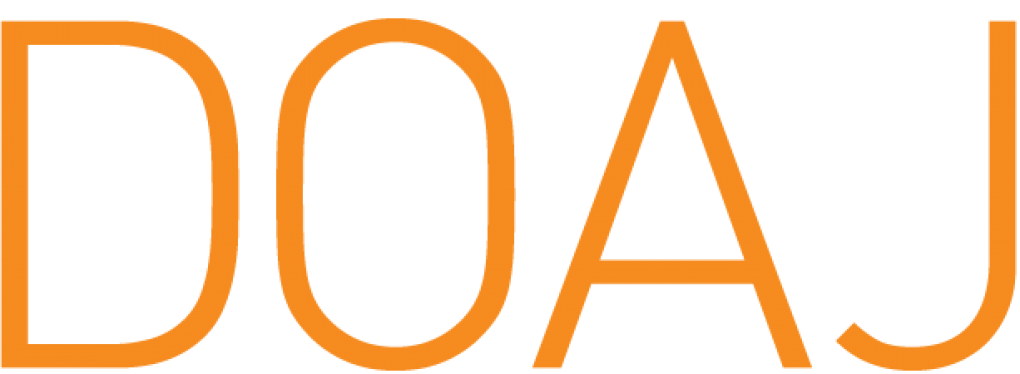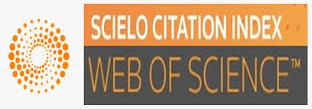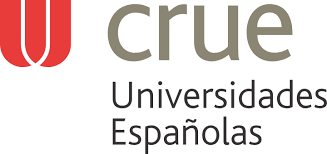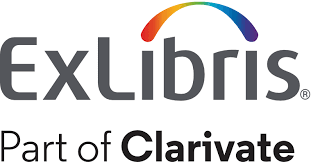El conocimiento semántico en la representación de problemas de ecuaciones diferenciales como modelos matemáticos
DOI:
https://doi.org/10.22335/rlct.v7i3.523Palabras clave:
resolución de problemas, ciclos de modelación, problemas de palabra, representaciones externas, conocimiento extra matemático, modelación matemática.Resumen
En este artículo se presenta la caracterización del conocimiento semántico evidenciado por un grupo de estudiantes en la representación externa a problemas de ecuaciones diferenciales lineales de segundo orden como modelos matemáticos. El trabajo fue cuantitativo de tipo exploratorio y descriptivo utilizando un cuestionario en la recolección de información. El soporte teórico que dio sentido al estudio fue el modelo de dos etapas propuesto por Mayer R. para la resolución de problemas matemáticos, el ciclo de modelación bajo la perspectiva cognitiva según Borromeo Ferri y la teoría de las representaciones de Goldin y Kaput. La investigación se centró específicamente en la fase de representación del modelo. Entre los principales hallazgos se destaca que cada participante hace su propia representación externa a conceptos como: sistema masa-resorte, peso, masa, punto de equilibrio, constante de elasticidad, punto de equilibrio, ley de Hooke, fuerza amortiguadora, fuerza externa, ley de Newton, entre otros. Se evidencian también dificultades en el tránsito del lenguaje natural al lenguaje matemático y la representación externa de cada una de los signos, símbolos o expresiones matemáticas inmersas en el problema de palabra, debido a que el resolutor tiene que construir un modelo mental de la situación real y plasmarlo en un modelo matemático. Lo anterior pone de manifiesto la importancia que tiene el conocimiento semántico en la etapa de traducción cuando se intentan resolver problemas como situaciones reales a modelar.
Descargas
Referencias
Allexsaht-snider, M., & Hart, L. (2001). “Mathematics for All”: How Do We Get There? Theory into Practice, 40(2), 93-101.
Barrantes, H. (2006). Los obstáculos epistemológicos. Retrieved Marzo 15, 2016, from Cuaderno de Investigación y Formación en Educación Matemaica: https://revistas.ucr.ac.cr/index.php/cifem/article/viewFile/6886/6572
Bassanezi, R., & Biembengut, M. (1997). Modelación matemática: una antigua forma de investigación, un nuevo método de enseñanza. Revista de Didáctica de las Matemáticas, 32, 13-25.
Berdugo Oviedo, G. (2004). Comprehension and representation of algebra word problems in a second language. Berdugo Oviedo, G. (2004).
ComprehensioAvailable from ProQuest Dissertations & Theses A&I: Social Sciences.
Blum , W., & Niss, M. (1991). Applied mathematical problem solving, modelling, applications, and links to other subjects—State, trends and issues in mathematics instruction. Educational studies in mathematics, 22(1), 37-68.
Blum, W., & Borromeo Ferri, R. (2009). Mathematical Modelling : Can It Be Taught And Learnt ? Journal of Mathematical Modelling and Application, 1(1), 45-58.
Borromeo, F. (2006). Theoretical and empirical differentiations of phases in the modelling process. ZDM - International Journal on Mathematics Education, 38(2),, 86-95.
Calle, C. E. (2013, Septiembre 13). Influencia de la semántica en el aprendizaje de las matemáticas en el segundo curso de bachillerato del Colegio Benigno Malo. (Trabajo de grado de Maestría). Retrieved from http://dspace.ucuenca.edu.ec/bitstream/123456789/4693/1/Tesis.
Camarena, G. P. (2009). La matemática en el contexto de las ciencias. Innovación Educativa, 9(46), 15-25.
Dostál, J. (2015). Theory of Problem Solving. Procedia - Social and Behavioral Sciences, 174,, 2798-2805.
Dreyfus, T. (2002). Dreyfus, T. (2002). Advanced mathematical thinking processes. In Advanced mathematical thinking. Springer Netherlands, 25-41.
Dubinsky, E. (1991). Dubinsky, E. (1991). Reflective Abstraction in Advanced Mathematical Thinking. Dubinsky, E. (1991). Reflective Abstraction in Advanced Mathematical ThinkDordrecht: Springer Netherlands: Dubinsky, E. (1991). Reflective Abstraction in Advanced Mathematical ThinkIn D. Tall (Ed.), Advanced Mathematical Thinking (pp. 95–126).
Edmonds-Wathen, C., Trinick, T., & Durand-Guerrier, V. (2016). Impact of Differing Grammatical Structures in Mathematics Teaching and Learning. In R. Barwell, P. Clarkson, A. Halai, M. Kazima, J. Moschkovich, N. Planas, … M. Villavicencio Ubillús (Eds.) . Mathematic Education, 23-46.
Goldin, G. A. (1998). Representational systems, learning, and problem solving in mathematics. The Journal of Mathematical Behavior, 17(2), 137-165.
Goldin, G. A., & Kaput, J. J. (1996). A Joint Perspective on the Idea of Representation in Learning and doing math. Theories of Mathematical Learning, 397-430.
Guerrero, J. G. (2012). Las matemáticas en Ingeniería: todo un reto pedagógico. Ed. Coruniamericana. 1(1)., 75-80.
Haghverdi, Majid, Semnani, Ahmad Shahvarani, Seifi, & Mohammad. (2012). The relationship between different kinds of students' errors and the knowledge required to solve mathematics word problems. Bolems. Bolema: Boletim de Educação Matemática, 26(42b).
Hashemi, N., Abu, M., Kashefi, H., & Rahimi, K. (2014). Undergraduate Students’ Difficulties in Conceptual Understanding of Derivation. Procedia - Social and Behavioral Sciences, 143,, 318-366.
Ilany, B., & Margolin, B. (2010). Language and mathematics: Bridging between natural language and mathematical language in solving problems in mathematics. Creative Education, 1(3),, 138-148.
Intaros, P., Inprasitha, M., & Srisawadi, N. (2014). Students’ Problem Solving Strategies in Problem Solving-mathematics Classroom. . Procedia - Social and Behavioral Sciences, 116, , 4119-4123.
Investigating challenges that Grade 11 mathematics learners face when translating from word problems to linear algebraic representations. Electronic Theses and Dissertations. (2015, julio 17). Retrieved from http://wiredspace.wits.ac.za/handle/105391/17633
Kaiser, G., & Sriraman, B. (2006). A global survey of international perspectives on modelling in mathematics education. . Zdm, 38(3),, 302-310.
Kashefi, H., Ismail, Z., & Yusof, Y. (2010). Obstacles in the Learning of Two-variable Functions through Mathematical Thinking Approach, Procedia - Social and Behavioral Sciences, 8, 173-180.
Madzorera, A. (2015). Investigating challenges that Grade 11 mathematics learners face when translating from word problems to linear algebraic representations. Electronic Theses and Dissertations. Retrieved Julio 17, 2015, from http://wiredspace.wits.ac.za/handle/10539/17633
Mayer, R. (1986). Thinking, Problem Solving, Cognition. Barcelona: (Trad. Graziella Baravella). (1a ed.). Barcelona: Ediciones Paidos. (Original publicado en 1983).
Moreno, M. M. (2005). El papel de la didáctica en la enseñanza del cálculo: evolución, estado actual y retos futuros. Noveno simposio de la sociedad española de Educación Matemática., 81-96.
Muir, T., Beswick, K., & Williamson, J. (2008). “I’m not very good at solving problems”: An exploration of students’ problem solving behaviours. The Journal of Mathematical Behavior, 27(3),, 228-241.
NCTM. (2000). Estándares curriculares y de evaluación para la educación matemática. National Council of Teacher of Mathematics.
Pape, S. J., & Tchoshanov, M. a. (2001). The Role of Representation(s) in Developing Mathematical Understanding. . Theory Into Practice.
Parra, B. (2001, Marzo 26). Parra, B.M. (2001). Dos concepciones de resolución de problemas matemáticos. En la enseñanza de las matemáticas en la escuela secundaria. Retrieved from http://euler.mat.uson.mx/depto/diplomado/secundaria/lecturas.pdf#page=13
Perales, F. (1993). La resolución de problemas: una revisión estructurada. Enseñanza de las ciencias. 11(2)., 170-178.
Pino, J. (2012). Concepciones y prácticas de los estudiantes de pedagogía media en matemáticas con respecto a la resolución de problemas y, diseño e implementación de un curso para aprender a enseñar a resolver problemas. (Tesis doctoral, Universidad de Extremadura). Recuperado de: Marzo 28, 2016, from http://dehesa.unex.es:8080/xmlui/bitstream/handle/10662/568/TDUEX_2013_Pino_Ceballos.pdf?sequence=1
Polya, G. (2005). Polya, G. (2005). Cómo plantear y resolver problemas. (reimp. XVII). Mexico: (Trad. Zagazagoitia) Mexico: Editorial Trillas. (Original publicado en 1965).
Rasmussen, C., & Blumenfeld, H. (2007). Reinventing solutions to systems of linear differential equations: A case of emergent models involving analytic expressions. The Journal of Mathematical Behavior, 26(3), 195-210.
Romo-Vásquez, A. (2014). La modelización matemática en la formación de ingenieros. Revista Educación Matemática. S.E., 314-338.
Sabbagh, S. (2008). Solución de problemas aritméticos redactados y control inhibitorio cognitivo. Universitas Psychologica, 7(1),, 217–229.
Santos, L. (2008). La Resolución de problemas: Avances y perspectivas en la construcción de una agenda de investigación y práctica. Memorias de seminario de Resolución de Problemas: 30 años después del XII Simposio de la Sociedad Española de investigación en Educ Matemática. Retrieved Marzo 07, 2016, from http://www.uv.es/puigl/MSantosTSIEM08.pdf
Sastre-Vazquez, P., Andrea, R. D., Villacampa, Y., & Navarro-Gonzalez, F. J. (2013). Do First-year University Students Understand the Language of Mathematics? Procedia - Social and Behavioral Sciences, 93,, 1658-1662.
Tobergte, D. R., & Curtis, S. (2013). No Title No Title. Journal of Chemical Information and Modeling, 53(9),, 1689-1699.
Toro, J. (2009). Las Matemáticas: fundamentos de disciplinas y profesores. Retrieved Marzo 09, 2016, from Mineducacion: http://www.mineducacion.gov.co/1621/articles-189357_archivo_pdf_matematica_1A.pdf_1A.pdf
Vergel Ortega, M., Duarte, H. I., & Martinez, J. J. (2016). Desarrollo del pensamiento matemático en estudiantes de cálculo integral su relación con la planificación docente. Revista Científica, 3(23), 17-29.
Wright, J. (2014). An investigation of factors affecting student performance in algebraic word problem solutions. . Available from ProQuest Dissertations & Theses A&I.
Zafra Tristancho, S. L., Vergel Ortega, M., & Martínez Lozano, J. J. (2014). Enseñanza, Lenguaje y pensamiento en cálculo. Un análisis cualitativo. Revista logos, ciencia & tecnología, 52(2), 379-388.
Zill, D., & Cullen, M. (2009). Ecuaciones diferenciales con problemas de valores en la frontera. (7a ed.). Mexico: Cengage Learning Editores.
Publicado
Número
Sección
Licencia
Esta revista provee acceso libre e inmediato a su contenido (https://creativecommons.org/licenses/by-nc-nd/4.0/), bajo el principio de hacer disponible gratuitamente la investigación al público y apoyar a un mayor intercambio de conocimiento global.

